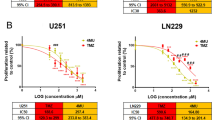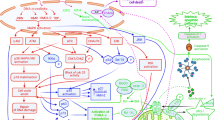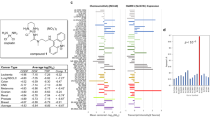Abstract
Multidrug resistance phenotypes in human tumours are associated with the overexpression of the 170 kDa P-glycoprotein encoded by the multidrug resistance 1 (MDR1) gene, and also with that of the non-P-glycoprotein-mediated multidrug resistance gene, MRP, which encodes a 190 kDa membrane ATP-binding protein. We have previously reported that overexpression of MRP appears to be responsible for spontaneous multidrug resistance in some human glioma cell lines (Abe et al., Int. J. Cancer, 58, 860-864, 1994). In this study, we investigated whether chemosensitising agents of P-glycoprotein-mediated multidrug resistance such as verapamil, a biscoclaurine alkaloid (cepharanthine), and a dihydropyridine analogue (NIK250) could also reverse multidrug resistance in human glioma cells. The glioma cell lines were the two MRP-expressing cell lines, T98G and IN500, an MDR1-expressing cell line, CCF-STTG1, and the MRP1 MDR1-non-expressing cell line, IN157. Verapamil and NIK250 almost completely reversed drug resistance to vincristine, etoposide and doxorubicin in T98G cells, while they also reversed drug resistance to vincristine and etoposide, but only partially to doxorubicin in IN500 cells. Cepharanthine as well as verapamil and NIK250 reversed vincristine resistance in CCF-STTG1 cells, but cepharanthine only partially reversed drug resistance in T98G and IN500 cells. The cellular accumulation of [3H]etoposide increased about 2- and 3-fold compared with control in T98G cells in the presence of verapamil and NIK250 respectively. Furthermore, the release of doxorubicin from the nuclei of T98G cells was blocked by NIK250. However, NIK250 and verapamil caused no apparent increase in vincristine accumulation in T98G cells. NIK250 or verapamil might exert inhibitory effects upon MRP function, resulting in a reversal of MRP-mediated spontaneous multidrug resistance in cultured human glioma cells.
This is a preview of subscription content, access via your institution
Access options
Subscribe to this journal
Receive 24 print issues and online access
$259.00 per year
only $10.79 per issue
Buy this article
- Purchase on Springer Link
- Instant access to full article PDF
Prices may be subject to local taxes which are calculated during checkout
Similar content being viewed by others
Author information
Authors and Affiliations
Rights and permissions
About this article
Cite this article
Abe, T., Koike, K., Ohga, T. et al. Chemosensitisation of spontaneous multidrug resistance by a 1,4-dihydropyridine analogue and verapamil in human glioma cell lines overexpressing MRP or MDR1. Br J Cancer 72, 418–423 (1995). https://doi.org/10.1038/bjc.1995.348
Issue Date:
DOI: https://doi.org/10.1038/bjc.1995.348
This article is cited by
-
Targeting multidrug resistance in cancer by natural chemosensitizers
Bulletin of the National Research Centre (2019)
-
Complete in vivo reversal of P‐glycoprotein pump function in the blood‐brain barrier visualized with positron emission tomography
British Journal of Pharmacology (1998)



